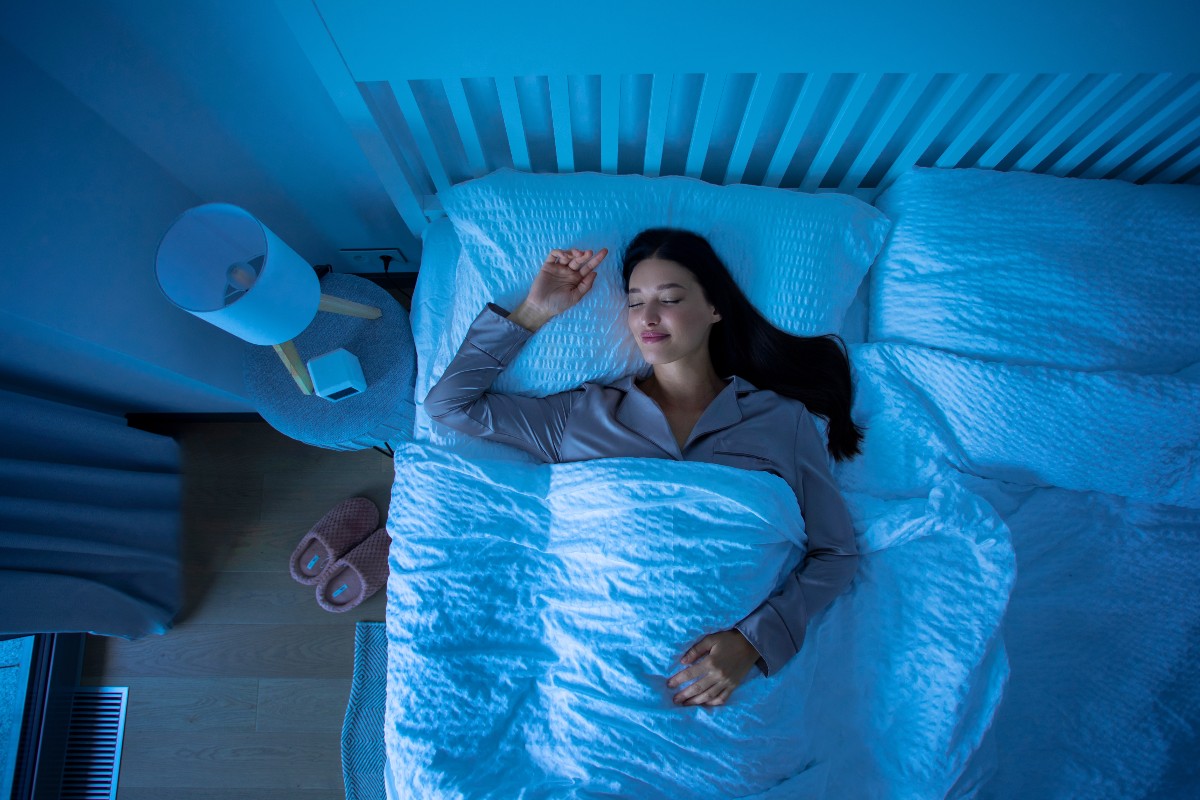
Sleep Tips for Back Sleepers
If you’re already a back sleeper, you're certainly doing your spine a favour. Sleeping on your back is actually one of the best positions for maintaining proper spinal alignment during the night.
But just because it's technically good for you doesn't mean it's always the most comfortable. And, it isn’t without its own challenges. Back sleeping is linked to several issues, particularly for those with pre-existing conditions such as back pain or sleep apnea.
Sleeping on your back can actually exacerbate low back pain (1). It’s also the position that’s most likely to increase snoring and has the potential to contribute to obstructive sleep apnea (OSA) too.
If you're a back sleeper looking to level up your sleep game, here are some simple and easy tips you can implement that should help you to sleep like a baby, on your back, of course.
1. Get the right pillow
Back sleeping works best with a pillow that’s not too high and not too flat. You want to choose a pillow that supports the natural curve of your neck. Luckily, you’re in the right place. At Bensons, we’ve got plenty of different types of pillows for back sleepers to choose from. A cooling memory foam or contoured pillow can work wonders here.
Top tip: If your chin seems to be getting pushed toward your chest, your pillow is too thick. You may wish to also try sliding a small pillow under your knees. This helps to reduce pressure on your lower back and keep your spine in a more natural position.
2. Check that mattress
Choosing the right mattress for your preferred sleep position is a must too. For those sleeping on their backs, the mattress shouldn't be too soft, otherwise your hips and mid-back will sink into it, messing with the alignment of your spine. A medium-firm to firm mattress usually works best for back sleepers.
If you find yourself waking up stiff on a regular basis, your mattress could be to blame. And as bed and mattress specialists, we feel a need to mention our exclusive SleepPro technology. This clever technology helps to assess your sleep position, weight, and height to help get you matched up with your ideal mattress.
To give it a try, simply pop into your local Bensons for Beds and request a sleep consultation with one of our on-hand experts. Alternatively, take a look at our range of mattresses online and find one that suits your needs at Bensons.
If you do regularly suffer with back pain at night (or when you wake up in the morning), you could be in need of an orthopaedic mattress. Orthopaedic mattresses are specifically designed with back pain in mind and could be a game-changer for your sleep health.
3. Watch your hands
If you find yourself waking up with sore shoulders or tingly hands, which is a relatively common complaint amongst back sleepers (2), it could be due to nerve compression as you sleep. Try positioning your arms close to your sides or resting them on your stomach to prevent this from happening. This can be a quick and effective solution to help minimise the likelihood of nerve compression from sleeping on your back during the night.
4. Train yourself if you roll over
If you want to be a back sleeper but keep ending up on your side or stomach, we see you. One thing that may be worth a try is propping pillows up on either side of your body. This can help to prevent you from rolling onto your side or stomach during the night as it creates physical barriers on either side. Your subconscious mind should get the message after a few nights of consistency.
5. Snoring? Time to elevate
Sleeping on your back can make snoring worse for some people (3). If your partner’s giving you side-eye every morning, try elevating your head a few inches. Adjustable beds are an amazing solution for this. However, simply stacking a couple of pillows up into a wedge shape (or choosing a wedge shaped pillow) can work just as well too. Just be careful not to elevate so much that you potentially strain your neck.
6. Check your bedroom temperature
If you find yourself overheating in the evenings then back sleeping could be just the method you need to cool down, it allows your body to breathe without keeping yourself all bunched up. Keeping your bedroom temperature cool, somewhere between 16–19°C(60–67°F) is optimal for sleep. Light blankets, adjustable duvets that adapt with the season, and breathable bed sheets all have a part to play in supporting good quality sleep.
Back sleeper essentials
To round up our sleep tips for back sleepers, we’ve included a back sleeper’s essentials checklist below:
- Medium-support pillow (plus one to position under your knees)
- Medium Firm - Firm mattress
- Arms by your sides to support better circulation
- Elevate your head if you struggle with snoring
- Keep your room at a cooler temperature
Back sleeper sleep tips: final thoughts
Sleep comfort is personal to you. What works for one person might not for another. But if you're already used to relaxing on your back, you’re off to a solid start. With a few minor adjustments to your sleep setup and habits, you might just wake up feeling like you slept well for a change.
First and foremost, back sleepers need to ensure that they have the correct mattress and pillows for their preferred sleep position. Next, address any necessary tweaks to your physical position in bed; such as positioning your arms by your sides or elevating your head to prevent snoring. Finally, try to keep your bedroom cool to promote faster sleep onset.
If you need any help choosing a new mattress for back sleepers, be sure to chat with one of our sleep experts. We’re always on hand to help you decide on the right sleep set up for your personal preferences.
Sources:

Gemma Henry - Content Lead
Gemma finds sleep fascinating and describes the discovery aspect of her role as eye-opening. Her keen eye for detail and dedication to thorough research ensures that Bensons customers get the informative sleep-based advice they're looking for.